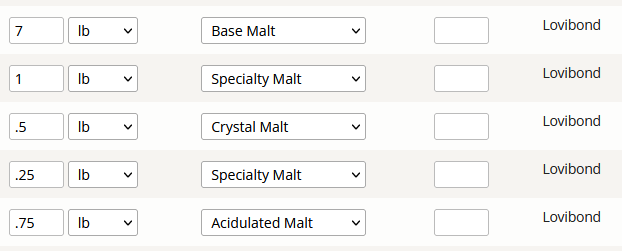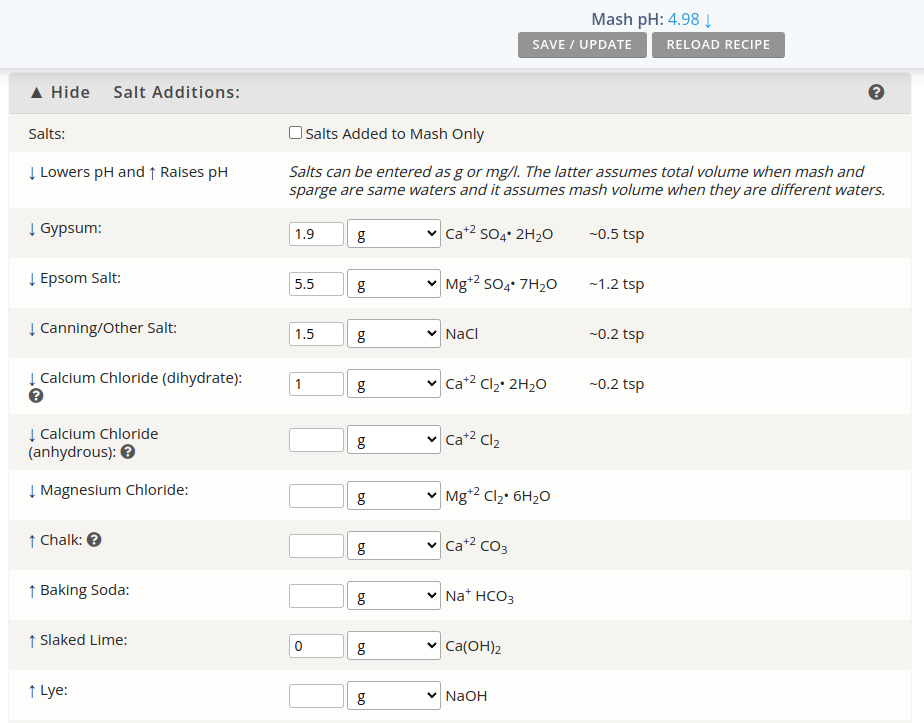I usually start with apx 8 gallons of water depending on grist bill. I add my salts based on a 5 gallon batch. I put half my water in the mash and sparge with the second half. But I started thinking I may be wrong here?
When adding salt additions to my water (RO) do I want to add it only to the half going into the mash or all the water? Does the sparge water need to have the change in water make up or is that only benifical to the mash? Can the sparge water just be the heated RO water?
I figured the mash needs the mineral content to keep the ph correct-ish. If half my salts are still in the HWT does that affect the mash? The minerals should only be based on 5 gallons not 8, as it will eventually boil down to 5ish, leaving the correct amount of minerals in the wort?
I am thinking changing my process to heat 4 gallons and add the salts, then after transferring to the tun, while that is in the mash, heat the other 4 gallons for the sparge no salts.
Is this correct? I keep talking my self in circles.
When adding salt additions to my water (RO) do I want to add it only to the half going into the mash or all the water? Does the sparge water need to have the change in water make up or is that only benifical to the mash? Can the sparge water just be the heated RO water?
I figured the mash needs the mineral content to keep the ph correct-ish. If half my salts are still in the HWT does that affect the mash? The minerals should only be based on 5 gallons not 8, as it will eventually boil down to 5ish, leaving the correct amount of minerals in the wort?
I am thinking changing my process to heat 4 gallons and add the salts, then after transferring to the tun, while that is in the mash, heat the other 4 gallons for the sparge no salts.
Is this correct? I keep talking my self in circles.








































![Craft A Brew - Safale BE-256 Yeast - Fermentis - Belgian Ale Dry Yeast - For Belgian & Strong Ales - Ingredients for Home Brewing - Beer Making Supplies - [3 Pack]](https://m.media-amazon.com/images/I/51bcKEwQmWL._SL500_.jpg)

























